Rank Species | Genus Pouteria Higher classification Pouteria | |
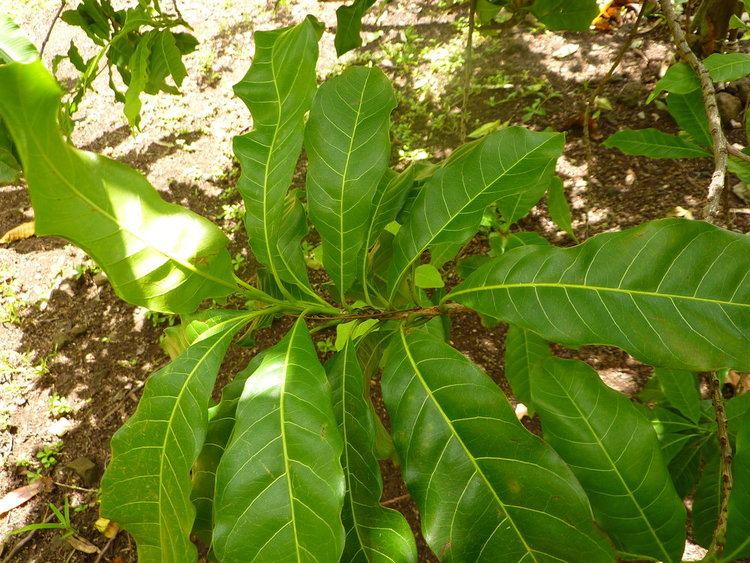 | ||
Similar Pouteria, star apple, Pouteria campechiana, Sapotaceae, Sapodilla | ||
The abiu fruit pouteria caimito hd video
Pouteria caimito, the abiu ([ɐˈbiw]), is a tropical fruit tree originated in the Amazonian region of South America. It will grow an average of 33 feet (10 m) high, and can grow as high as 116 feet (35 m) under good conditions. Its fruits shape varies from round to oval with a point. When ripe, it has smooth bright yellow skin and will have one to four ovate seeds.† The inside of the fruit is translucent and white. It has a creamy and jelly-like texture and its taste is similar to the sapodilla — a sweet caramel custard. The abiu tree is part of the Sapotaceae family and is very similar in appearance to the canistel.
Contents
- The abiu fruit pouteria caimito hd video
- Distribution
- Other Names
- Description
- Fruit
- Varieties
- Season
- Uses
- Culinary
- Medicinal
- Cultivation
- Propagation
- Pests and diseases
- References

Distribution

The abiu, Pouteria caimito, is commonly considered as native to the headwaters of the Amazon. It grows wild in the lower eastern part of the Andes from southwestern Venezuela to Peru. It also grows around Tingo Maria and Iquitos, Peru and it will commonly be found in the Province of Guayas in Ecuador, where it's sold in the markets. The abiu was cultivated by Amerindians and it became widespread in the Amazon, however the origins of the fruits distribution outside the Amazon is uncertain. In the Amazon basin, it is found to grow heavily in the Northern Brazilian State of Pará but is also found sparsely in collections from the Atlantic rainforest near Rio de Janeiro and Bahia. It can also be found in Colombia in areas such as the regions of Caquetá, Meta and Vaupes and it is very plentiful in Amazonas, Venezuela. It has also been growing for a very long time in Trinidad.
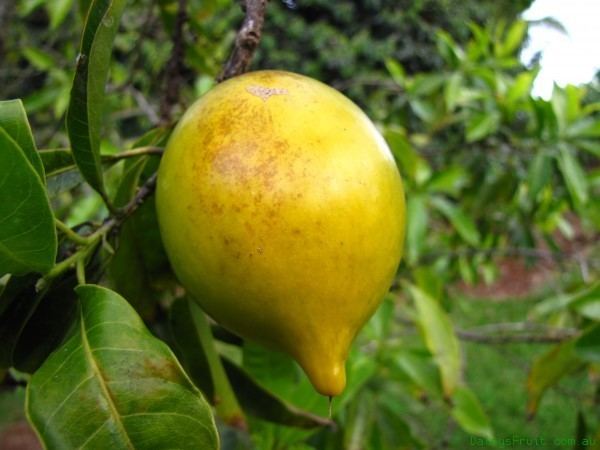
The abiu grows best in areas that have a year-round moist and a warm climate. It can now be found throughout most of the Amazon. It is a common dooryard tree in the backyards and streets in the city of many Brazilian towns, but it is not usually grown commercially. The abiu habitats are nearly all tropical. It will thrive in a place that has a year round warm and moist climate, although it has been known to grow well in Rio de Janeiro, which is a somewhat cooler climate. In Peru it cannot grow above 2,000 feet (610 m) feet in elevation, but in Colombia it has been found growing up to an elevation of 6,000 feet (1,800 m).
Other Names
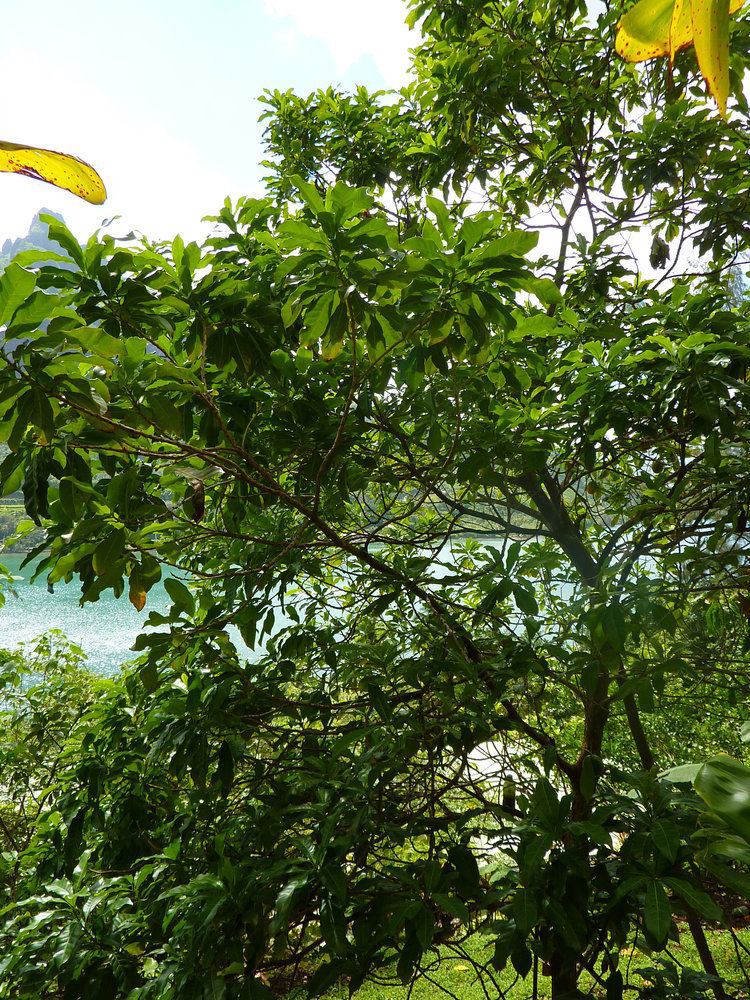
The fruit is known by different regional names in countries of production: in Trinidad it is the yellow star apple or caimitt (distinct from the star apple); Colombians know it as the caimo, caimito amarillo (again not to be confused with Chrysophyllum cainito, which is known as caimito in some countries) or madura verde; in Ecuador it is known as the luma or cauje; in Venezuela as temare; in Portugal as abieiro; and in Ghana as alasa. It is also known as abio.
Description
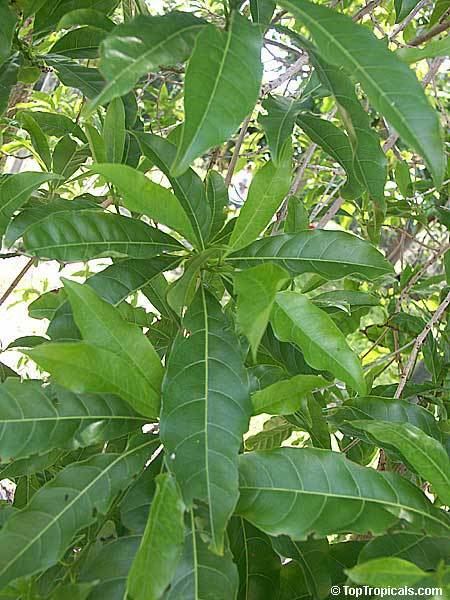
The leaves of Pouteria caimito range from oblong to elliptic. They can be anywhere from four to eight inches (10 to 20 centimeters) in length and one and a half to two and a half inches (3.5 to 6.5 centimeters) in width. The flowers on the tree may come either single or in clusters of two to five flowers. They will appear on the leaf axils on long, thin shoots. The flowers are small with four to five petals. The petals are cylindrical and are white to greenish in color. The flowers are hermaphroditic, meaning they are both sexes. The flowers open in the morning and can stay open for about two days.
Fruit
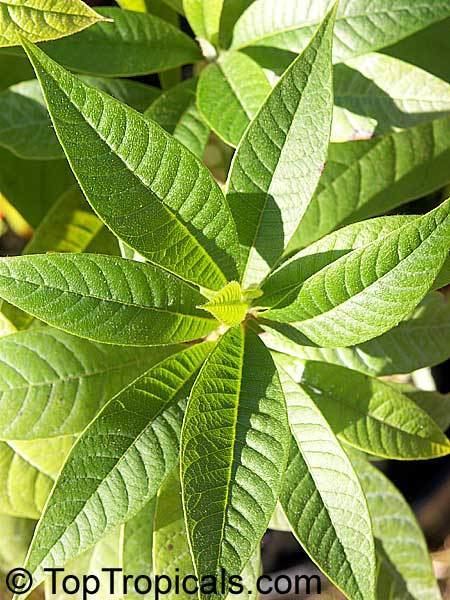
Mature abiu trees produce one hundred to one thousand fruits each year. These have a pale, translucent pulp of a custard consistency that is easily scooped out with a spoon; there may also be a few bits of tougher gel. The seeds are easily removed and are covered with a thin layer of adherent pulp. The fruit has a sweet, mild taste which may have a hint of pineapple but is best described as reminiscent of caramel flan. It is often used in ice cream or eaten out of hand.
Unripe fruits contain a gummy and unpalatable latex that hardens upon exposure to air. The skin of the ripe fruit is a pale yellow color with a leathery texture and residual latex. Because mature fruits will continue to ripen when picked, the harvest can be timed to allow for transportation to market. However, this period may be as short as five days. Maturation can be recognized by the pale green-to-yellow color break and the ripe fruit can be identified by its yellow coloration and a slight softness.
Varieties
The abiu varies a lot in form, size and quality of the fruit. Some have soft and others firm flesh. Some taste bland while others have very nice flavor. In Colombia along the Putamayo River there is a variety with large, round fruits that produces after four years. In Vaupes, Colombia, there is a variety that will bear fruit just one year after seeding; however, these fruits will be small and contain little pulp.
Season
Abiu may have several flowering periods a year, with potential for both flowers and fruit on the tree at one time. The development time from flower to ripe fruit is approximately three months. The main crop season varies by climate.
In Ecuador, the fruits are in season during the months of March and April, but may also produce in other times of the year. In some Brazilian markets, they are sold from September to April, however at this time they are sparse. In Bahia there is a short season in February and March. In the small region of suitable subtropical climate in the continental United States, the southern tip of Florida, the fruits ripen from August to October. In Northern Queensland, Australia, the main crop ripens January to March.
Uses
The wood of the abiu tree is dense, heavy, and hard and is used as lumber in construction.
Culinary
The fruit of the abiu tree is edible and considered one of the best of the sapotes due to having the sweet caramel-like taste of sapodilla with a smoother texture. It is commonly eaten out of hand and, although in Colombia those eating the fruit this way are advised to grease their lips to keep the gummy latex from sticking, this hazard can be avoided by selecting fully ripe fruits and scooping out the flesh with a utensil. The tartness of a bit of added lime juice may enhance the flavor, especially when chilled. The melting sweet pulp of the abiu is also used to flavor ice cream and cut into yogurt for a light and delicious breakfast. The subtlety of the flavor limits its utility in more complex confections and salads. Abiu fruit is a significant source of calcium, phosphorus, vitamin A, and vitamin C.
Medicinal
The dark golden-yellow, overripe fruit develops a mucilaginous nature. In Brazil, people use this characteristic to relieve coughs, bronchitis and other pulmonary afflictions. Other folk medicine uses are as an astringent, anti-anemic, and anti-inflammatory and to relieve fever and diarrhea.
Cultivation
The tree grows best in tropical areas and in places that have a warm moist climate all year long, and is slightly less hardy than related sapotes such as the canistel and sapodilla (nispero). Within the United States, it grows well in South Florida as far north as Palm Beach County, and has survived brief freezes. It prefers wet, slightly acidic soil with high organic content and may suffer from iron deficiency (chlorosis) in alkaline soils. A tree that has just been planted will be fragile and needs protection from wind and cold weather. Only light pruning is necessary and feeding should be frequent, but light.
Propagation
Propagation is nearly always by seeds, but the fruit of seedling trees is variable. Fresh seeds need to be planted within a few days if they are to remain viable and will germinate in two to three weeks. The lower branches of the seedling may be pruned after a year and the first fruit can be expected in three years, with substantial yields at five years. Grafting, budding and air layering can be used to propagate superior strains and advance the production schedule.
Pests and diseases
There is little commercial value to the fruit in its native range because it is often damaged by small insects. In Brazil, the main pest that destroys the fruit is thought to be the fruit fly. Thrips are known to attack buds, leaves and young fruits, but in exotic locations abiu can be relatively pest-free, especially if fruit is harvested at maturity and ripened off the tree.
